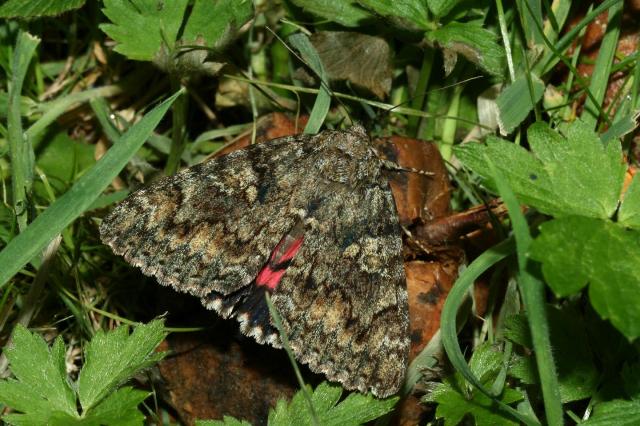Aug 14 2015
Kalmar/Halle(Saale). Why some species of plants and animals vary more in number than others is a central issue in ecology. Now researchers at Linnaeus University in Sweden and from the Helmholtz Centre for Environmental Research (UFZ) have found an important finding to answer this question: Individual differences have a positive and stabilizing effect on the number of moths.
Species with varying colour drawing are generally more numerous and fluctuate less in number from year to year. The results were recently published in the internationally renowned journal Proceedings of the Royal Society B. This could help to explain why some insect species in some years are very abundant pests and cause substantial damage in agriculture and forestry.
 The Red Underwing (Catocala nupta) -- is on rotten fruit sucking. The moths was named after its distinctive red color. In the study this species showed no variability. That means, the population fluctuated stronger than species with high variability in color and drawing. (Photo: Martin Wiemers/ UFZ)
The Red Underwing (Catocala nupta) -- is on rotten fruit sucking. The moths was named after its distinctive red color. In the study this species showed no variability. That means, the population fluctuated stronger than species with high variability in color and drawing. (Photo: Martin Wiemers/ UFZ)
Moths are a species-rich group of insects that occur in different habitats. The nocturnal moths play an important role as pollinators. Adult moths lay their eggs on plants that the caterpillars feed on during their upbringing. Both the larvae and the fully formed moths are an important food resource for birds and bats. Some species are causing major damage to crops and trees in farming and forestry. It has long been known that the presence of some night butterfly species varies greatly from year to year, but why some species fluctuate and others are stable has been shrouded in mystery.
A research team led by Professor Anders Forsman at Linnaeus University has highlighted the issue through over a period of 11 years collecting moths at a site in southern Sweden with a light trap. The 115.000 individuals are representing 246 different species of moths. The researchers counted how many butterflies of each species they captured in the different years. Then divided the species into three different groups depending on how much colour artwork varies between individuals within each species.
„In general, we captured more individuals of the species that varied greatly in colour drawing, compared to species where individuals were more similar to each other. Additionally the number of individuals fluctuated strongly between different years for species that had little or no colour variation", says Dr Markus Franzén from the UFZ, who was responsible for the fieldwork. „The relationship between colour variation and stability was independent of activity period or host plant range, since the more stable species with large variation in colour drawing were not restricted in their activity to a shorter part of the year or to a narrower range of host plants. We are therefore pretty sure that there is variation in colour artwork which affects the dynamics of moth populations", continues Markus.
The population fluctuations were not synchronised among the different species. This suggests that the changes were caused by biological processes rather than by abiotic differences in, for example weather conditions. Our results may be partly explained by the assumption that variation in coloration makes predators less effective that hunt by sight", says Prof Anders Forsman from the Linnaeus University. „The individual differences contribute to increased stability of the moths which confirms conclusions from previous studies of frogs, lizards and snakes that colour variation is a key to success in the wild", he continues.
The findings have practical importance. Information on animal colour drawings can be used in conservation biology to identify which species are particularly threatened and in need of protective measures. "Perhaps our discovery also helps to predict which species might greatly increase in their numerical strength and thus might cause damage to agriculture and forestry", says Dr Per-Eric Betzholtz from the Linnaeus University who also worked on the study.